Medical credentialing services help healthcare providers get approval from payers and regulatory bodies. Without proper credentialing, providers face delayed reimbursements, claim denials, and administrative burdens that impact their revenue cycle. Meeting compliance requirements helps providers maintain operations and continue patient care.
What is Provider Credentialing?
To begin with, provider credentialing is the process of verifying a healthcare provider’s qualifications, experience, and certifications to confirm their eligibility to practice and receive reimbursements from insurance companies. This ensures that providers meet payer and regulatory requirements before treating patients. The process involves primary source verification, background checks, and compliance with credentialing standards established by insurers and healthcare organizations.
For a comprehensive explanation, visit NCQA’s Guide to Credentialing, a trusted resource in the healthcare industry.
Understanding Medical Credentialing Services
Moreover, medical credentialing services verify healthcare providers’ qualifications, confirm compliance with insurance networks, and align with regulatory bodies. These services simplify the provider enrollment process, reducing claim denials and reimbursement delays.
Provider Credentialing Process Flow Chart
The provider credentialing process involves multiple steps that must be completed accurately to avoid delays. Below is a structured flow chart outlining the key steps:
| S.No | Step | Description |
|---|---|---|
| 1 | Provider Data Collection | Gathering provider’s information, including education, certifications, and work history. |
| 2 | Primary Source Verification | Validating qualifications through licensing boards and educational institutions. |
| 3 | Application Submission and Follow-Up | Sending data to insurers and ensuring timely approval. |
| 4 | Payer Approval | Insurance companies review the application and confirm provider eligibility. |
| 5 | Enrollment Completion | The provider is successfully enrolled and can begin billing for services. |
How Does Provider Credentialing Work?
Provider credentialing confirms a healthcare provider’s credentials, licenses, and certifications against state and federal regulations. Payers require this validation to verify compliance before authorizing billing. Inaccurate credentialing may lead to claim denials and revenue loss.
How Much Does Provider Credentialing Cost?
The cost of provider credentialing varies based on the number of payers, process complexity, and whether the provider manages it internally or outsources it.
For a detailed breakdown of costs and the best approach for your practice, visit our Provider Enrollment & Credentialing Services page.
Provider Credentialing vs. Enrollment
Understanding the distinction between credentialing and enrollment is vital for providers. While both processes involve approvals, they serve different purposes in payer contracting. While provider credentialing and provider enrollment are often used interchangeably, they have distinct differences:
| Aspect | Provider Credentialing | Provider Enrollment |
|---|---|---|
| Purpose | Confirms provider qualifications and background | Registers provider with payers for insurance billing |
| Focus | Licenses, certifications, education | Payer contracts and reimbursement approval |
| Process Timeline | Takes 60-120 days depending on the payer | Typically follows credentialing and takes additional time |
| Importance | Ensures compliance and quality standards | Allows providers to receive payments from insurers |

Why We Are the Best Provider Credentialing Company in the US
Medical Billing Wholesalers is a trusted partner for healthcare providers looking for reliable credentialing solutions. Here’s what sets us apart:
- Extensive Industry Knowledge: Our team specializes in managing credentialing for physicians, specialists, and healthcare facilities.
- Accelerated Processing: We actively communicate with payers to expedite approvals and prevent hold-ups.
- Regulatory Compliance: Our process aligns with industry regulations, reducing the risk of claim rejections.
- Comprehensive Service Support: From documentation to payer enrollment, we oversee the entire process so providers can focus on patient care.
The Costly Pitfalls of Delayed Provider Credentialing
As a result, one of the most common issues providers face is the delay in credentialing approvals, leading to lost revenue and disrupted operations. Without proper credentialing, providers cannot bill insurance companies, creating financial strain and affecting patient services. Many practices struggle with managing the intricate process, missing essential deadlines and documentation.
To prevent these setbacks, practices can benefit from Provider Enrollment & Credentialing Services, which handle the entire credentialing process, securing timely approvals and uninterrupted reimbursements.
Statistics on Medical Credentialing Services
- 85% of providers experience claim delays due to incomplete credentialing.
- 70% of small practices report administrative burden as their biggest credentialing challenge.
- 60% of credentialing applications are returned due to missing or incorrect information.
Common Challenges in Medical Credentialing Services
Providers often encounter several challenges during credentialing. These obstacles can lead to processing delays, claim denials, and difficulties in maintaining compliance.
| S.No | Challenge | Solution |
|---|---|---|
| 1 | Lengthy Processing Time | Regular follow-ups to avoid delays. |
| 2 | Complex Documentation | Thorough review of insurer requirements. |
| 3 | Compliance with Regulations | Staying updated with evolving healthcare laws. |
How to Choose the Right Medical Credentialing Services Provider
Selecting a credentialing service provider requires careful consideration. The right partner can improve processes, reduce delays, and ensure compliance with payer requirements.
| S.No | Factor | Importance |
|---|---|---|
| 1 | Experience | Ensures accuracy and proper handling. |
| 2 | Technology-Driven Approach | Minimizes errors and tracks application progress. |
| 3 | Full-Service Support | Handles credentialing from start to finish. |
A Checklist to Avoid Credentialing Setbacks
Many providers face rejections due to errors in credentialing applications. Missing documents, incorrect payer information, and outdated licensure often cause unnecessary delays. By following a structured approach, practices can significantly improve their credentialing success rate.
A valuable resource for ensuring compliance and accuracy is the Provider Credentialing & Contracting Checklist, which outlines every step providers need to take for a seamless credentialing process.
The Impact of Medical Credentialing Services on Reimbursements
Therefore, medical credentialing services directly affect revenue cycles by securing timely provider enrollment. Without proper credentialing, insurers may postpone or deny claims, leading to financial setbacks for healthcare practices. Effective credentialing services ease administrative burdens and strengthen revenue cycle processes by preventing billing issues.
For additional industry insights, explore Medscape’s Guide on Physician Credentialing, which provides authoritative resources for healthcare professionals.
Conclusion
Medical credentialing services are essential for healthcare providers seeking to establish and maintain payer contracts. Selecting a reliable credentialing service provider helps minimize claim rejections, reduce administrative strain, and optimize practice operations.

